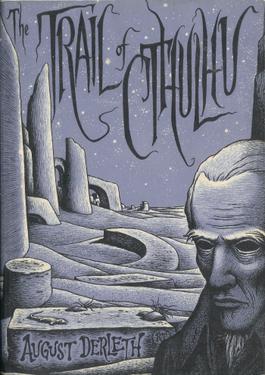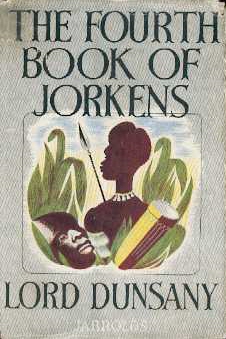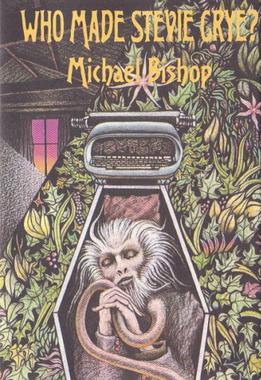James Paul Blaylock is an American fantasy author. He is noted for a distinctive, humorous style, as well as being one of the pioneers of the steampunk genre of science fiction. Blaylock has cited Jules Verne, H. G. Wells, Robert Louis Stevenson, Arthur Conan Doyle and Charles Dickens as his inspirations.

Kevin Wayne Jeter is an American science fiction and horror author known for his literary writing style, dark themes, and paranoid, unsympathetic characters. He has written novels set in the Star Trek and Star Wars universes, and has written three sequels to Blade Runner. Jeter coined the term "steampunks".

Timothy Thomas Powers is an American science fiction and fantasy author. His first major novel was The Drawing of the Dark (1979), but the novel that earned him wide praise was The Anubis Gates (1983), which won the Philip K. Dick Award, and has since been published in many other languages. His other written work include Dinner at Deviant's Palace (1985), Last Call (1992), Expiration Date (1996), Earthquake Weather (1997), Declare (2000), and Three Days to Never (2006). Powers has won the World Fantasy Award twice for his critically acclaimed novels Last Call and Declare. His 1987 novel On Stranger Tides served as inspiration for the Monkey Island franchise of video games and was partly adapted into the fourth Pirates of the Caribbean film.
Arkham House was an American publishing house specializing in weird fiction. It was founded in Sauk City, Wisconsin, in 1939 by August Derleth and Donald Wandrei to publish hardcover collections of H. P. Lovecraft's best works, which had previously been published only in pulp magazines. The company's name is derived from Lovecraft's fictional New England city, Arkham, Massachusetts. Arkham House editions are noted for the quality of their printing and binding. The printer's mark for Arkham House was designed by Frank Utpatel.

Slan is a science fiction novel by American-Canadian writer A. E. van Vogt, as well as the name of the fictional race of superbeings featured in the novel. The novel was originally serialized in the magazine Astounding Science Fiction. It was subsequently published in hardcover in 1946 by Arkham House, in an edition of 4,051 copies. In 2016, Slan was awarded the Retro-Hugo Award for Best Novel for 1941.

The Trail of Cthulhu is a series of interconnected short stories by American writer August Derleth as part of the Cthulhu Mythos genre of horror fiction. The stories chronicle the struggles of Laban Shrewsbury and his companions against the Great Old Ones, particularly Cthulhu.

The Lurker at the Threshold is a horror novel by American writer August Derleth, based on short fragments written by H. P. Lovecraft, who died in 1937, and published as a collaboration between the two authors. According to S. T. Joshi, of the novel's 50,000 words, 1,200 were written by Lovecraft.

Witch House is a fantasy novel by American writer Evangeline Walton. It was published in 1945 by Arkham House in an edition of 3,000 copies. It was the first full-length novel to be published by Arkham House and was listed as the initial book in the Library of Arkham House Novels of Fantasy and Terror. An expanded version, with a newly written 20,000-word prologue, was published in England in 1950. In 2013, Centipede Press issued the first American edition of this revised version, also including previously unpublished writings by Walton and several of her short stories.

The Fourth Book of Jorkens is a collection of fantasy short stories, narrated by Mr. Joseph Jorkens, by writer Lord Dunsany. It was first published by Jarrolds in 1947. It was the fourth collection of Dunsany's Jorkens tales to be published. It has also been issued in combination with the third book, Jorkens Has a Large Whiskey, and two uncollected short stories, in the omnibus edition The Collected Jorkens, Volume Two, published by Night Shade Books in 2004.

Roads is a short novel by author Seabury Quinn. It was published by Arkham House in 1948 in an edition of 2,137 copies. It was Arkham House's first illustrated book and the author's first hardcover.

The Mind Parasites is a science fiction horror novel by English author Colin Wilson. It was published by Arkham House in 1967 in an edition of 3,045 copies. It was Wilson's first and only book published by Arkham House.

The Green Round is a horror novel by Welsh author Arthur Machen. It was originally published by Ernest Benn Limited in 1933. The first U.S. edition was published by Arkham House in 1968 in an edition of 2,058 copies. It was the only book by Machen to be published by Arkham House.

The House of the Worm is a collection of stories by American writer Gary Myers. It was published in 1975 by Arkham House in an edition of 4,144 copies and was the author's first book. The collection is written in a style that closely mimics the works of H. P. Lovecraft and Lord Dunsany, serving as an effective expansion of Lovecraft's Dream Cycle.

Dreams from R'lyeh is a collection of poems by Lin Carter. The book was released in hardcover by Arkham House in 1975 in an edition of 3,152 copies. It was Carter's only book published by Arkham House. The title sequence of sonnets, "Dreams from R'lyeh", has also been reprinted in Robert M. Price's The Xothic Legend Cycle: The Complete Mythos Fiction of Lin Carter.

Born to Exile is a fantasy novel by American writer Phyllis Eisenstein, the first of her three Alaric novels. It was originally published in 1978 by longtime U. S. specialty press Arkham House in a first edition trade hardcover of 4,148 copies; it has since been published in several mass-market paperback editions and again in hardcover in the UK. Portions of the novel were first serialized as individual shorter works through The Magazine of Fantasy & Science Fiction.

The Darkling is a fantasy novel by author David Kesterton. It was published by Arkham House in 1982 in an edition of 3,126 copies. It was the author's first book.

Who Made Stevie Crye?, subtitled A Novel of the American South, is a horror novel by American writer Michael Bishop. It was released in 1984 by Arkham House in an edition of 3,591 copies, and later in paperback by Headline. It was the author's first novel and third book published by Arkham House.

Memories of the Space Age is a collection of science fiction stories by British writer J. G. Ballard. It was released in 1988 by Arkham House. It was published in an edition of 4,903 copies and was the author's first book published by Arkham House. The stories, set at Cape Canaveral, originally appeared in the magazines Ambit, Fantastic Stories, Fantasy and Science Fiction, Interzone, New Worlds and Playboy.

Mr. Fairlie's Final Journey is a detective fiction novel by American writer August Derleth. It was released in 1968 by Mycroft & Moran in an edition of 3,493 copies. The novel is part of Derleth's Solar Pons stories which are pastiches of the Sherlock Holmes tales of Arthur Conan Doyle. It was the eighth Solar Pons book published by Mycroft & Moran.

Homunculus is a comic science fiction novel by American writer James P. Blaylock. It was published in 1986. It was the second book in Blaylock's loose steampunk trilogy, following The Digging Leviathan (1984) and preceding Lord Kelvin's Machine (1992). The book was originally published as an Ace paperback by the Berkeley Publishing Group and is included in the Adventures of Langon St. Ives collection.


















